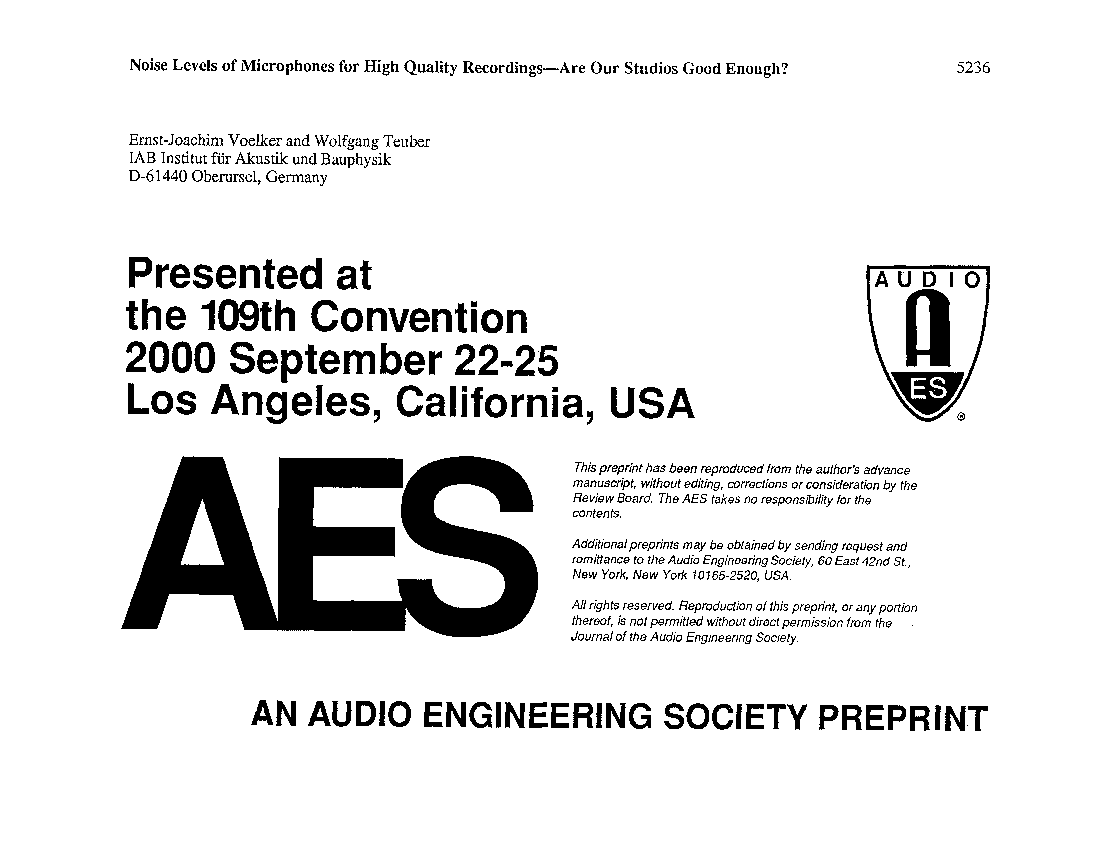Home / Publications / E-library page
You are currently logged in as an
Institutional Subscriber.
If you would like to logout,
please click on the button below.
Home / Publications / E-library page
Only AES members and Institutional Journal Subscribers can download
For microphones both the sensitivity in mV/Pa and the noise level, e.g. in dB(A), are defined. They are part of the product specification. The minimum noise level is like an unavoidable noise floor, which remains when high amplification is required. The frequency response and the weighted noise level can be measured and compared with the permitted noise levels for studios, which are generally required in order to allow high-quality recordings and transmission. The question arises whether the studios are good enough for these recordings, e.g., for microphones at a large distance to the sound source, as it applies normally for drama studios or special music recordings. The signal-to-noise ratio of digital transmission allows lower levels to be recorded and reproduced in control rooms. With special microphones the sound of lower levels, e.g., 1 dB(A), can be measured. Noise rating curves for 15 to 20 dB(A) indicate that a much higher noise level is permitted in many cases. In this paper a rating curve is proposed for microphones in different studios in order to define the noise levels for both microphones and studios.:
Author (s): Völker, Ernst-Joachim; Teuber, Wolfgang
Affiliation:
IAB Institut fur Akustik und Bauphysik, Oberursel, Germany
(See document for exact affiliation information.)
AES Convention: 109
Paper Number:5236
Publication Date:
2000-09-06
Import into BibTeX
Session subject:
Room Acoustics
Permalink: https://aes2.org/publications/elibrary-page/?id=9102
(2090KB)
Click to purchase paper as a non-member or login as an AES member. If your company or school subscribes to the E-Library then switch to the institutional version. If you are not an AES member Join the AES. If you need to check your member status, login to the Member Portal.

Völker, Ernst-Joachim; Teuber, Wolfgang; 2000; Noise Levels of Microphones for High-Quality Recordings-Are Our Studios Good Enough? [PDF]; IAB Institut fur Akustik und Bauphysik, Oberursel, Germany; Paper 5236; Available from: https://aes2.org/publications/elibrary-page/?id=9102
Völker, Ernst-Joachim; Teuber, Wolfgang; Noise Levels of Microphones for High-Quality Recordings-Are Our Studios Good Enough? [PDF]; IAB Institut fur Akustik und Bauphysik, Oberursel, Germany; Paper 5236; 2000 Available: https://aes2.org/publications/elibrary-page/?id=9102